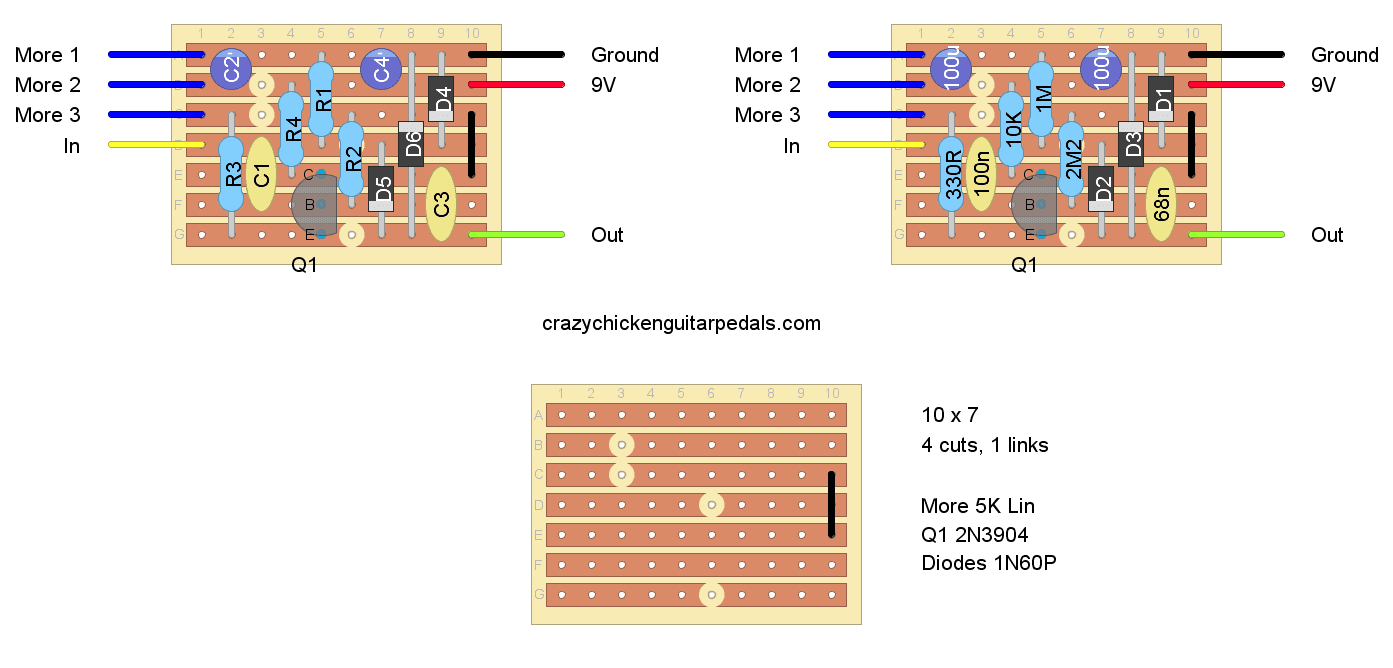The Speaker Cranker by EarthQuaker Devices is an easy to make single knob guitar pedal. EarthQuaker Devices are calling this an overdrive but, judging by the schematic and the sound, I’d be more likely to call this pedal a distortion (and there is a difference between distortion, overdrive, and fuzz). That being said, I’ve just taken another listen to this thing, and it does have a softer clipping sound than a crunchy distortion, so perhaps this is an edge case. Hell, make this pedal and decide for yourself!
However you look at it though, EarthQuaker Devices’ Speaker Cranker is a good choice of your first DIY guitar pedal. If this is your first and you still don’t know where to talk, take a look at my guide on how to build your first guitar pedal, which uses this pedal as an example.
Like many single knob easy to make guitar pedals, the Speaker Cranker uses the Electra Distortion circuit as a basis. It’s a well known circuit that works well and is easy to modify. It’s interesting to see how many pedals use this circuit.
EarthQuaker Devices Speaker Cranker Wiring Schematic
As mentioned, the circuit for the Speaker Cranker looks to be based on the Electra Distortion circuit. The Electra Distortion usually only has volume control just before the output, with the only way to adjust the amount of distortion being produced is to adjust how strong the signal going into the circuit is: e.g. by adjusting the volume of your guitar. Here you can see, however, the single potentiometer on the Speaker Cranker is the “More” pot, which is adjusting the gain of the transistor. The more gain the transistor gives, the more the diodes are going to start clipping. And that’s where you get the sound of this pedal.
Here’s the wiring diagram:
Click on the schematic to enlarge it.
And here’s the bill of materials.
| Notes | ||
|---|---|---|
| R1 | 1M | |
| R2 | 2.2M | |
| R3 | 330R | |
| R4 | 10K | |
| C1 | 100nF | |
| C2 | 100uF | Polarised |
| C3 | 68nF | |
| C4 | 100uF | Polarised |
| Q1 | 2N3904 | |
| P1 | 5K Lin | More potentiometer |
| Diodes | 1N60P | |
| Jacks, power supply, etc. | Don't Forget | The stuff you usually use. |
This circuit is so close to the Electra Distortion that it’s using the same model transistor. But if it works, it works, so why not? Values for resistors and capacitors are pretty similar to the original (with a couple small changes and additions), and the model of the diodes are different.
But all in all, there is a simple elegance to this circuit, and that’s the reason why it’s used so often.
To that end, I’m not going to really suggest modifications; this is already a modification of another circuit! You may want to consider adding a volume potentiometer at the end of the circuit in order to get finer adjustments though.
EarthQuaker Devices Speaker Cranker Stripboard Layout
As mentioned, this is a good DIY guitar pedal for beginners but, if the below stripboard layout doesn’t mean anything to you, take a look at my step by step guide to building your first guitar pedal. It uses this pedal as the example.
If you have some experience making guitar pedals, you’ll note that I’ve presented the stripboard layout with both the component numbers and the values. So if you are making any changes to the schematic, it’s easy enough to see what you’re changing.
Click on the diagram to enlarge it.
My Experience Building The EarthQuaker Devices Speaker Cranker Pedal
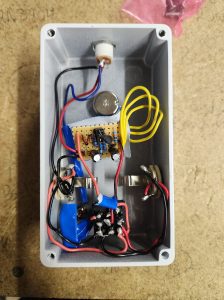 Being a single knob pedal with only a handful of parts to it, the Speaker Cranker was pretty easy to bang out. Sometimes with these smaller builds I do get a little arrogant and make some careless errors; you can see where I’ve had to add some extra wire here and there. But hey, it’s still a lot of fun to make pedals like this! While it’s really satisfying to make something large and intricate that may take days to finish, it’s equally satisfying to just get something done quickly.
Being a single knob pedal with only a handful of parts to it, the Speaker Cranker was pretty easy to bang out. Sometimes with these smaller builds I do get a little arrogant and make some careless errors; you can see where I’ve had to add some extra wire here and there. But hey, it’s still a lot of fun to make pedals like this! While it’s really satisfying to make something large and intricate that may take days to finish, it’s equally satisfying to just get something done quickly.
With all of that in mind, I don’t have any pointers for building this pedal, beyond what I’ve already said on the longer guide for first time pedal builders.
How Does The EarthQuaker Devices Speaker Cranker Sound?
As mentioned, EarthQuaker Devices is calling this an overdrive, and they’re not wrong. According to EarthQuaker themselves, the Speaker Cranker can be used as a dirty boost (but don’t call it boost). When the “more” dial is cranked all the way up, you get quite a lot of clipping and, yes, it’s more of a soft overdriven clip. But if you’re putting enough into this thing, it starts to distort nicely.
To that end, for a single knob pedal, the Speaker Cranker is quite versatile. You can use it as a dirty boost or a pre-amp to add some thickness to your tone. Or you can turn it up and start to get more distortion out of your tone. It may be a pedal that you’re constantly adjusting as you go for different sounds, it may be something that is always on, giving you your own unique sound, or it may be used to push through the mix when needed. It’s up to you.
Related posts:
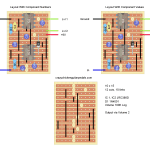 EarthQuaker Devices Acapulco Gold On Stripboard
EarthQuaker Devices Acapulco Gold On Stripboard
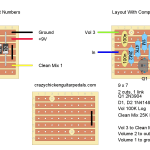 Greer Amps Green Giant On Stripboard
Greer Amps Green Giant On Stripboard
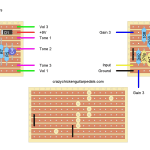 Lovepedal Purple Plexi On Stripboard
Lovepedal Purple Plexi On Stripboard
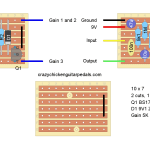 ZVEX Super Hard On On Stripboard
ZVEX Super Hard On On Stripboard
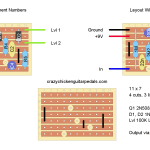 Lovepedal Champ On Stripboard
Lovepedal Champ On Stripboard
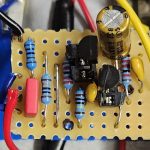 How To Make A Distortion Pedal
How To Make A Distortion Pedal
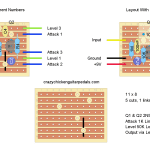 Vox Tone Bender On Stripboard
Vox Tone Bender On Stripboard
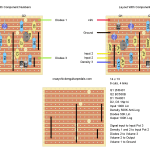 Catalinbread Karma Suture On Stripboard
Catalinbread Karma Suture On Stripboard
 Colorsound One Knob Fuzz On Stripboard
Colorsound One Knob Fuzz On Stripboard
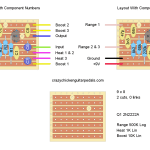 Catalinbread Naga Viper On Stripboard
Catalinbread Naga Viper On Stripboard

